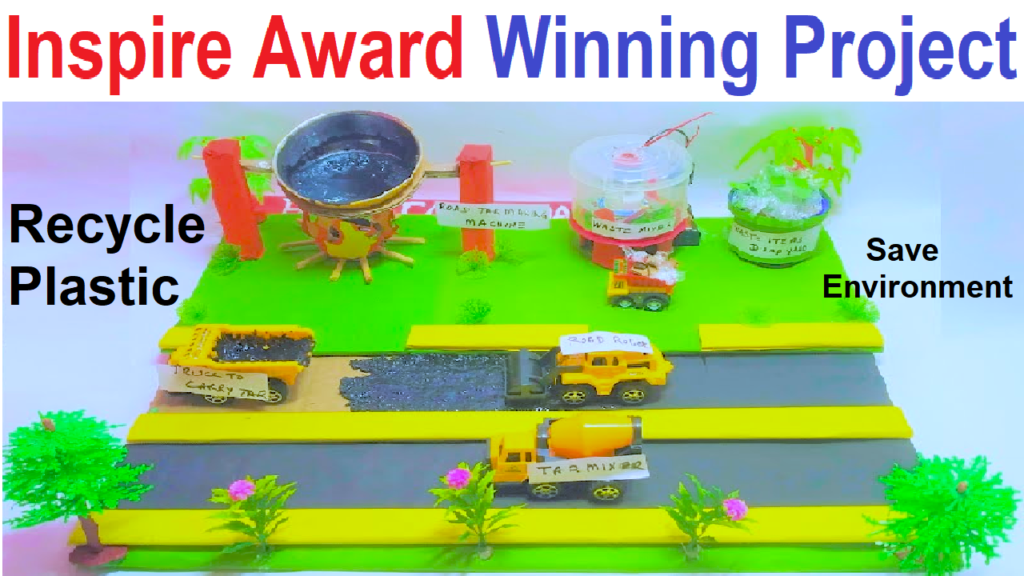Introduction
In our quest for sustainable solutions to combat plastic pollution, innovative initiatives have emerged, offering a beacon of hope for a cleaner, greener future.

One such groundbreaking endeavor involves the transformation of discarded plastic materials into a resource that underpins our very infrastructure – road construction.
The process of recycling plastic into road tar represents a dynamic fusion of environmental consciousness and technological ingenuity.
Creating a working model that demonstrates the process of recycling plastic into tar for road construction is an excellent way to promote environmental awareness and showcase innovative solutions. Here’s how you can build this model:
Materials Needed:
- Plastic waste (clean and dry)
- Heat-resistant container (metal or ceramic)
- Stove or hot plate (to apply heat)
- Sand or gravel (for simulating road surface)
- Small cardboard or wooden frame (to simulate road)
- Small toy car or miniature vehicle
- Glue or adhesive
- Thermometer (to monitor temperature)
- Protective gloves and safety goggles (for safety during heating process)
Steps:
Preparing the Plastic Tar:
- Collect and Clean Plastic Waste:
- Gather clean, dry plastic waste. It’s important to use only non-toxic plastics for this process.
- Shred the Plastic:
- Cut or shred the plastic into small pieces. The smaller the pieces, the easier they will melt.
- Set Up the Heating Station:
- Place a heat-resistant container on a stove or hot plate. Ensure good ventilation.
- Add the Plastic Pieces:
- Place the shredded plastic into the container. Start with a small amount for demonstration purposes.
- Heat and Monitor Temperature:
- Gradually apply heat to the container. Monitor the temperature using a thermometer. Plastic typically melts between 160°C to 180°C (320°F to 356°F).
- Observe Melting Process:
- As the plastic melts, it will become a viscous liquid.
- Pour onto the Road Surface Simulation:
- Prepare the road surface simulation using sand or gravel in the cardboard or wooden frame.
- Pour the Melted Plastic:
- Pour the melted plastic onto the road surface simulation, spreading it evenly.
- Allow it to Cool and Solidify:
- Let the plastic cool and solidify. This will form a thin layer similar to tar on a road.
Assembling the Working Model:
- Attach Miniature Vehicle:
- Use glue or adhesive to attach a small toy car or miniature vehicle to the plastic-covered road surface. This simulates a vehicle moving on the road.
- Demonstrate the Model:
- Move the miniature vehicle back and forth to demonstrate the durability of the plastic tar.
Educational Notes:
- Discuss the Environmental Impact:
- Explain how recycling plastic into road tar can help reduce plastic pollution and decrease the need for virgin materials in road construction.
- Highlight the Benefits:
- Emphasize the advantages of using plastic tar, such as its durability, resistance to weathering, and potential cost savings.
- Safety and Environmental Considerations:
- Stress the importance of conducting this process in a well-ventilated area and using non-toxic plastics. Also, mention the need for proper recycling facilities for large-scale projects.
This working model effectively demonstrates a practical application of recycling plastic for environmental conservation, making it an engaging and educational project.

